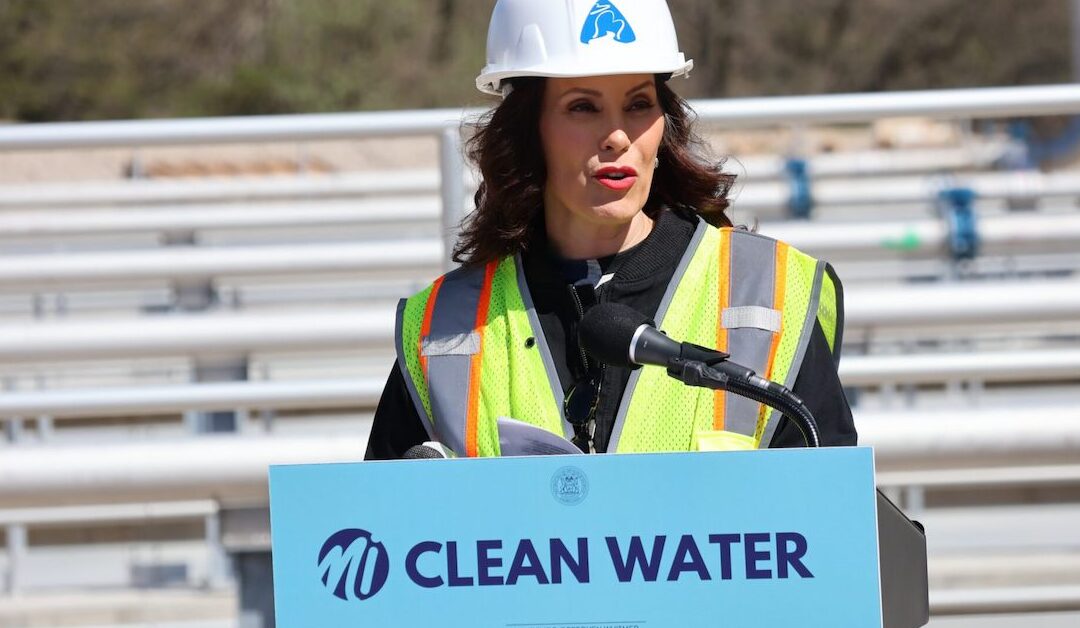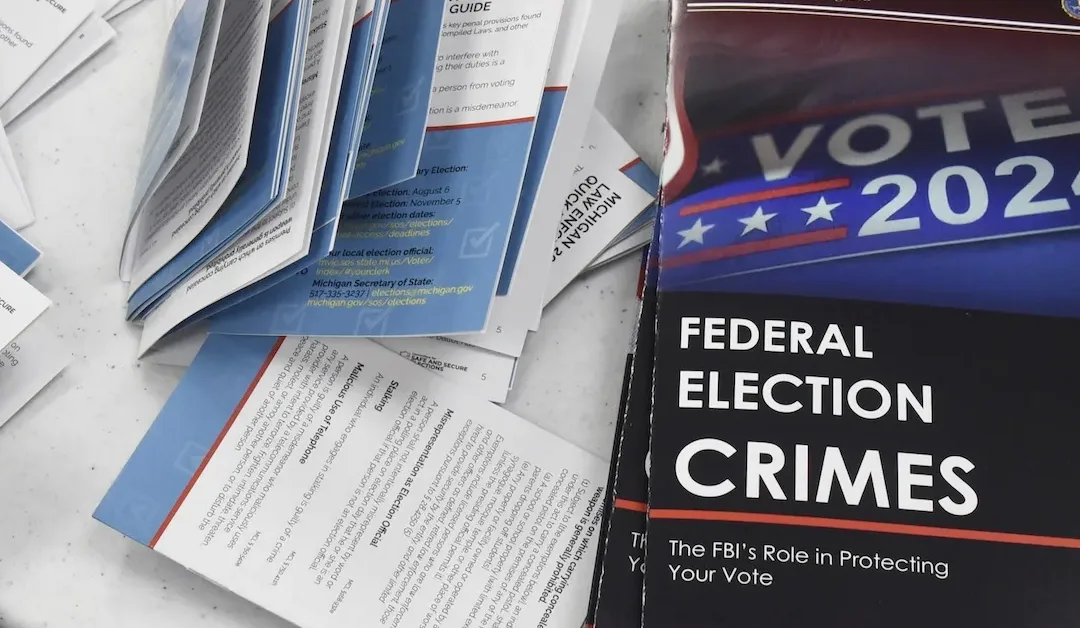Try this Michigan math problem: Sending 10 students to Washington, D.C., on a history and government field trip costs $15,000. A public high school in Howell only has $1,000 budgeted for field trips for the whole school…for the entire year. Down the road, Bloomfield Hills High School’s field trip budget can support sending 50 kids this year. How should the state fund the schools?
MICHIGAN—Last year, the Howell Innovation Academy—a public school near Brighton—took 10 of its students to Washington, D.C. For one week, the students took part in the Close Up Washington, D.C. program, which turns the nation’s capital into a living history and government classroom. For many of the Howell students, the trip was their first time out of the state.
The cost of the program was $15,000—far more than Howell Innovation Academy’s $1,000 annual field trip budget for the entire school.
“None of the students that went last year would have been able to go if we hadn’t had generous donors,” said Jay McDowell, a Howell teacher who helped organize the trip.
In fact, there’s no D.C. trip in the works this year.
“We can’t tap those donors two years in a row,” McDowell said. “So we’re trying to go every other year because there’s no funding coming from the school district for this, and there’s not enough money in the budget.”
McDowell said this is the reality for many schools across the state—when districts don’t have the money to pay for extra learning opportunities like field trips, schools either need to find a way to raise the money or parents are asked to pay for them.
But what if the parents can’t afford it either?
For example, at the Innovation Academy, 53% of its students are economically disadvantaged, and many students are also dealing with a lack of housing, according to McDowell.
On the other hand, 41 miles away at Bloomfield Hills High School, only 10% of its population is considered economically disadvantaged. In the most recent Bloomfield Hills High School budget, there’s enough money allotted for field trips this year to send 10 students to Washington, D.C… five times.
This is just one example of how inadequate and inequitable public school funding impacts vulnerable students more than others—especially when it comes to additional opportunities and resources that McDowell says makes school more meaningful and applicable—not to mention exciting—for students.
“There’s not equal opportunity for students across the state,” McDowell said.
A recent report by the nonprofit group Education Trust-Midwest said the same, calling Michigan’s education system an “engine of inequality.” It also recommended switching to a new funding model—a weighted model, which the organization says “would provide Michigan with an opportunity to be fairer to students across the state.”
Legislative Democrats and the governor have long been interested in changing how Michigan’s public schools are funded. Now that they’ve secured at least two years of control in Lansing, they’re developing a strategy to create a measurable impact.
“I think we’ll have the money,” said Sen. Rosemary Bayer (D-Beverly Hills), who sits on the Senate Appropriations Committee, which will help craft the education budget. “With the way that we’ve been trying to approach it with the governor’s office, I think that we’re gonna have a pretty good working relationship to get this model put together in a way that makes sense.”
Right Now: How Are Michigan’s Schools Funded?
Every school district gets money from the state based on how many students it has, with what’s called a per-pupil allowance. This system started in 1994.
Back then, the plan was for a minimum and maximum per-pupil amount that school districts would receive from the state, based on how much the district raised in local property taxes—if your district raised less in property taxes, it got a lower amount. If it raised more, it got a higher amount. If right now you’re wondering why districts with less coming in from local sources received less funding, the short answer is that the system was broken, and this was the first step in fixing it. The state didn’t have unlimited resources, so it had to decide where to spend more. Wealthy school districts—accustomed to bringing in major dough for their schools—were more amenable to a system that allowed them to keep funding their schools as they had already been doing.

The plan was for the range of per-pupil funding to change over time, with the lower end increasing at a faster rate than the higher end, until eventually those two numbers would meet and every district in the state would receive the same per-pupil allowance.
Twenty-seven years after the funding model started, that convergence happened: In 2021, every district was given a base amount of $8,700 per pupil. Equal funding…but not equitable.
For nearly 30 years, the poor districts that had started off with bigger problems were given less money to solve them than affluent districts—allowing disparities between Michigan’s rich kids and poor kids to get worse.
Schools that had previously been bringing in large sums of money locally continued to pour their funds into infrastructure, technology and extra classes, like additional language programs—things that poorer districts didn’t have as much money for, said Ann Arbor Public School teacher Frances Lazette, who spoke to the ‘Gander in December.
For example, at one of the schools where Lazette taught prior to working in Ann Arbor, the ceilings leaked when it rained.
“If it rained, it would rain inside the building as well and you would just move your garbage can to where the rain would come in,” she said.
At another school, they didn’t have textbooks for the class she taught. At another, no functioning library. So when a poor school in Michigan got just enough funding to stretch beyond the education of their students, that funding had to be triaged—extras like field trips just don’t make the cut.
What Could Change?
Since her first campaign for the governor’s office in 2018, Gov. Gretchen Whitmer has been proposing moving Michigan’s public education system to a weighted-funding model.
A weighted funding model gives each student the base per-pupil amount, but then additional funds (weights) are added for different needs—like low-income or disabled students.
It would essentially create a formula:
Base funding + (base funding × weight as a percentage) = how much a school gets per pupil
The 2019-20 budget Whitmer submitted to the Legislature put her weighted funding proposal in writing—but the majority-Republican Legislature nixed it. At the time, Sen. Wayne Schmidt (R-Traverse City), who chaired the School Aid budget subcommittee, told the Detroit News that the Senate was sympathetic to the challenges some students may have, but a weighted model would create a gap between what students “up north” in his region received, compared to what students downstate got—implying that more of the state’s funding would be spent in southern Michigan.
The Legislature decided instead to increase the per-pupil allowance to $7,871-$8,529 per student—still depending on how wealthy the district was.
So you might be wondering: In 2021, when the gap closed and every student received the same amount from the state ($8,700), was there a sigh of relief that the system had worked?
Not quite. To start, the Michigan School Finance Collaborative had calculated that Michigan’s $8,700 per-pupil funding was still inadequate across the board—$10,421 per pupil would have been necessary just for Michigan’s students to get the basic learning requirements set by the state.
That compounded lack in funding is showing up everywhere in Michigan’s kids. They currently rank 43rd in the nation for fourth grade reading scores. For Black students, it’s even worse: Michigan is now in the bottom five states in fourth grade reading scores for Black students.
And learning loss as a result of the COVID-19 pandemic hurt every student in the state—but some more than others. Students in Detroit, Lansing and Saginaw had a reading learning loss of more than a full grade level, while Bloomfield Hills students lost only .04 of a grade level.
And it’s not as though the state’s Legislature didn’t know what was happening. Year after year, education advocacy groups and education experts made recommendations for improving Michigan’s funding model. Teachers and administrators begged for help. The need for school supplies and basic resources became so common that social media memes and sitcom storylines were created around them.
And many of Michigan’s Democratic politicians tried to pass policies to help teachers and students. But the Republican-majority Legislature wouldn’t go for it, resisting substantive change for Michigan’s students.
Related: Michigan Republicans use school aid budget to keep trans women out of sports
However, in the 2022 midterm elections, Republicans ran their campaigns with a focus on education. For example, the failed Republican candidate for governor, Tudor Dixon, promoted a Betsy DeVos-backed voucher system that would have taken money from public schools and given it to private ones. She also focused heavily on banning drag queens in schools (they weren’t in schools to begin with), alleged that there was pornography being spread in school libraries, rallied for book bans in classrooms, and proposed legislation similar to Florida’s “Don’t Say Gay” law, which bans any talk of sexual orientation in the classroom until third grade.
Michigan voters weren’t buying it. Not only did Dixon lose, but up and down the ballot, Republicans who campaigned on false education issues lost, while Democrats—who are historically pro-public education—swept both chambers of the Legislature for the first time in 40 years.
Related: Michigan voted in favor of public education in the midterms
Now, Democratic lawmakers are talking about making substantive changes for Michigan’s students— including a predictable, more equitable funding model.
“I have every expectation that we will get it done or get darn close to it,” said Sen. Bayer.
How Can I Get Involved?
Reach out to your local representatives to express your feelings on education funding. Find their contact information here.
Look here to see how much your district spends per student.
Here are three suggestions for how to donate to your local schools for field trips or other necessities:
- PTA Fundraisers.
- Call the main school line and ask if you can donate directly.
- The website DonorsChoose allows you to donate directly to a Michigan classroom for a specific need.
Politics

Whitmer expands clean water plan while enviros call for more clean energy investments
BY KYLE DAVIDSON, MICHIGAN ADVANCE MICHIGAN—As construction workers at the Delta Township Wastewater recovery facility continued efforts to expand...

Michigan Dems push for action on prescription drug board bills
BY KYLE DAVIDSON, MICHIGAN ADVANCE MICHIGAN—Four Democratic House members are renewing the call for action on prescription drug affordability,...

Local election workers fear threats to their safety as November nears. One group is trying to help.
TRAVERSE CITY—The group gathered inside the conference room, mostly women, fell silent as the audio recording began to play. The male voice, clearly...
Local News

These students are protecting the ‘coral reefs’ of Michigan—and you can too
Vernal pools are a critical part of Michigan’s natural ecosystem—but they’re not protected by state regulations. Here’s how Michiganders are...

The food at Comerica Park puts peanuts & Cracker Jacks to shame
Gone are the days when peanuts and Cracker Jacks were the most exciting food items at baseball games. Baseball stadiums around the country now boast...





